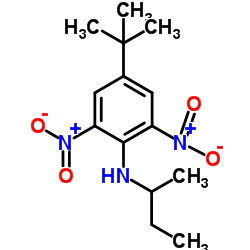Alpha-tubulin missense mutations correlate with antimicrotubule drug resistance in Eleusine indica.
E Yamamoto, L Zeng, W V Baird
文献索引:Plant Cell 10(2) , 297-308, (1998)
全文:HTML全文
摘要
Dinitroaniline herbicides are antimicrotubule drugs that bind to tubulins and inhibit polymerization. As a result of repeated application of dinitroaniline herbicides, highly resistant and intermediately resistant biotypes of goosegrass (Eleusine indica) developed in previously wild-type populations. Three alpha-tubulin cDNA classes (designated TUA1, TUA2, and TUA3) were isolated from each biotype. Nucleotide differences between the susceptible and the resistant (R) alpha-tubulins were identified in TUA1 and TUA2. The most significant differences were missense mutations that occurred in TUA1 of the R and intermediately resistant (I) biotypes. Such mutations convert Thr-239 to Ile in the R biotype and Met-268 to Thr in the I biotype. These amino acid substitutions alter hydrophobicity; therefore, they may alter the dinitroaniline binding property of the protein. These mutations were correlated with the dinitroaniline response phenotypes (Drp). Plants homozygous for susceptibility possessed the wild-type TUA1 allele; plants homozygous for resistance possessed the mutant tua1 allele; and plants heterozygous for susceptibility possessed both wild-type and mutant alleles. Thus, we conclude that TUA1 is at the Drp locus. Using polymerase chain reaction primer-introduced restriction analysis, we demonstrated that goosegrass genomic DNA can be diagnosed for Drp alleles. Although not direct proof, these results suggest that a mutation in an alpha-tubulin gene confers resistance to dinitroanilines in goosegrass.
相关化合物
| 结构式 | 名称/CAS号 | 分子式 | 全部文献 |
|---|---|---|---|
 |
丁烯酯甲酸
CAS:33629-47-9 |
C14H21N3O4 |
|
Simultaneous residue measurement of pendimethalin, isopropal...
2004-11-17 [J. Agric. Food Chem. 52(23) , 6912-5, (2004)] |
|
[Chemical weed control of medicinal plant Bupleurum falcatum...
2000-04-01 [Zhongguo Zhong Yao Za Zhi 25(4) , 210-3, (2000)] |
|
Methodology for the determination of dinitroaniline herbicid...
1985-01-01 [J. Anal. Toxicol. 9(1) , 15-9, (1985)] |